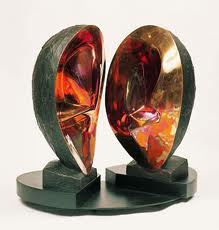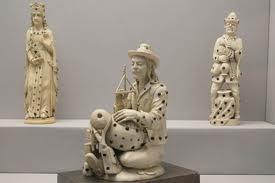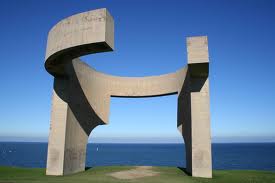Modern Spanish Sculpture
The 20th and 21st Centuries have certainly been a time for a change, and not just in the world of art and sculpture. Spain not only had to deal with the World Wars, but also with its own internal Civil War. After the Spanish Civil War, the Spanish people also had to deal with the dictatorship of General Francisco Franco, which made all artistic pursuits a little bit harder. However, after the death of Franco in the 1970s, there was a cultural and artistic explosion in the country.

Therefore, although this period has been relatively short, it has contained several distinct styles of sculpture, as well as many distinct sculptors. Furthermore, the purpose of sculpture changed during this era. Sculptures were rarely commissioned by people from the upper Spanish classes or the Catholic Church. Sculptures tended to be created only for artistic merit or to serve as a subtle protest or commentary on the world. This is the case with the sculptures called 'Los fajaditos' by Pablo Serrano, which were produced as a protest against the regime of General Franco.
Avant-Garde Spanish Sculpture
The end of the 19th Century and the first third of the 20th Century saw the evolution of various different styles of art and sculpture. Fauvism, Cubism, and Futurism all came to be part of the melting pot which is called avant-garde. It was also the rise of the vanguard Spanish sculptors, a movement which was headed by the Spanish sculptor Pablo Gargallo.

Gargallo originally began sculpting in a classical style but then decided to become more experimental in his work. A lot of his later works contained strong influences from Cubism and Minimalism.
Although it is hard to classify his work into a single style, it could be said that Mateo Hernández was another Spanish sculptor who developed the avant-garde style of sculpture in Spain. His work was extremely individual and he employed ancient stone-work techniques in order to produce modern sculptures.
Abstract Spanish Sculpture
Abstract sculpture broke away with the form and function of the sculpture being produced during the 19th Century. Pablo Picasso and Georges Braque originally helped to break this stranglehold with the invention of Cubism. Abstract sculpture continued to be influenced by the early avant-garde movement up until the end of the Second World War. However during the 1930s, some abstract artists began creating groups in order to develop the art of abstraction further.

The post-war period was the springboard for abstract art as artists needed some way to capture the public's imagination in order to distract them from the horrors of the previous years. From the 1960s and 70s, large metal abstract sculptures became extremely popular.
In Spain, Eduardo Chillida and Jorge Oteiza led the way in the large scale public monuments. The town of San Sebastian in the North of Spain is an excellent place to study these Spanish artists' works. For example, you can find Jorge Oteiza's 'Construcción Vacia' which can be found by the seafront in San Sebastian; whereas you can see Chillida's 'El peine del viento' (The Comb of the Wind), which consists in many sculptures which are attached to some of the rocks along the coast of San Sebastian. Unsurprisingly, having such similar works in the same place, the two Spanish sculptors had a bit of a rivalry.
Pablo Serrano, another Spanish Abstract sculptor also used metal in his sculptures. However he preferred to use metal rods in order to create dynamic and interesting sculptures. Serrano also created many sculptures with a Cubist feel such as his many sculptures of guitars and animals.
Other Modernist Spanish Sculpture
Spanish sculpture of the 20th and 21st Century has been very mixed and so it is sometimes hard to classify a particular sculptor or series of sculptures into a single style. This is the case with the Spanish sculptor Juan Muñoz.
Although his sculptures are of a Modernist style, it is difficult to say whether they are Abstract or Avant-garde. Instead Muñoz's sculptures tended to form a scene or a 'narrative' as he liked to call it. The figures would appear to be in the middle of doing something, yet at the same time, they would also invite the audience to be a part of that scene.
